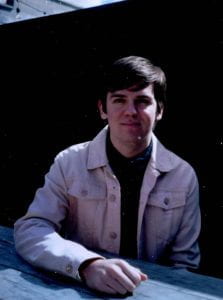 I read and write about early modern poetry and drama, and am particularly interested in questions surrounding allegory, the Baroque, and corporal metaphors of the state (or the “body politic”). My dissertation project (“Early Modern Hoarders: Matter, Idolatry, and Inheritance in English Poetry and Drama, Spenser to Milton”) tracks the figures of the “hoarder” and the “collector” in early modern thought and art — from popular icons of greed or miserliness to less obvious “hoarder” figures, including priests, nuns, usurers, cuckolds, sodomites, idolators, encyclopedia compilers, jail wardens, librarians, “blocking” characters, cave-dwelling monsters, art collectors, and list-makers. My project, as well as my work more generally, is primarily informed by queer theory.
I read and write about early modern poetry and drama, and am particularly interested in questions surrounding allegory, the Baroque, and corporal metaphors of the state (or the “body politic”). My dissertation project (“Early Modern Hoarders: Matter, Idolatry, and Inheritance in English Poetry and Drama, Spenser to Milton”) tracks the figures of the “hoarder” and the “collector” in early modern thought and art — from popular icons of greed or miserliness to less obvious “hoarder” figures, including priests, nuns, usurers, cuckolds, sodomites, idolators, encyclopedia compilers, jail wardens, librarians, “blocking” characters, cave-dwelling monsters, art collectors, and list-makers. My project, as well as my work more generally, is primarily informed by queer theory.
Concept: Collecting
We inherit the word “collect” from the Latin colligere — to gather together — and from the 15th century on, to “collect” has meant to gather together into one place that which has been spread out. Noah, as many have noted, might be identified as the first to achieve the ultimate mark of distinction among all collectors: a perfect set. So too might a broad range of activities and institutions be understood under the rubric of collecting, ranging from the culturally sanctioned (banks, museums, archives) to the quirky (seed-banks, niche-museums, private collections) and to the neurotic (hoarding). Indeed, the figure of the collector is often shadowed by its negative, the hoarder, who has ceased to discriminate and instead accumulates, as mere matter, all that which cannot be justified by any form of use whatsoever. How does the collection function as a form or vehicle of knowledge, and why have thinkers ranging from Walter Benjamin to anthropologist Krzysztof Pomian found in collecting something which exceeds, rather than merely caricatures, the logic of commodification?